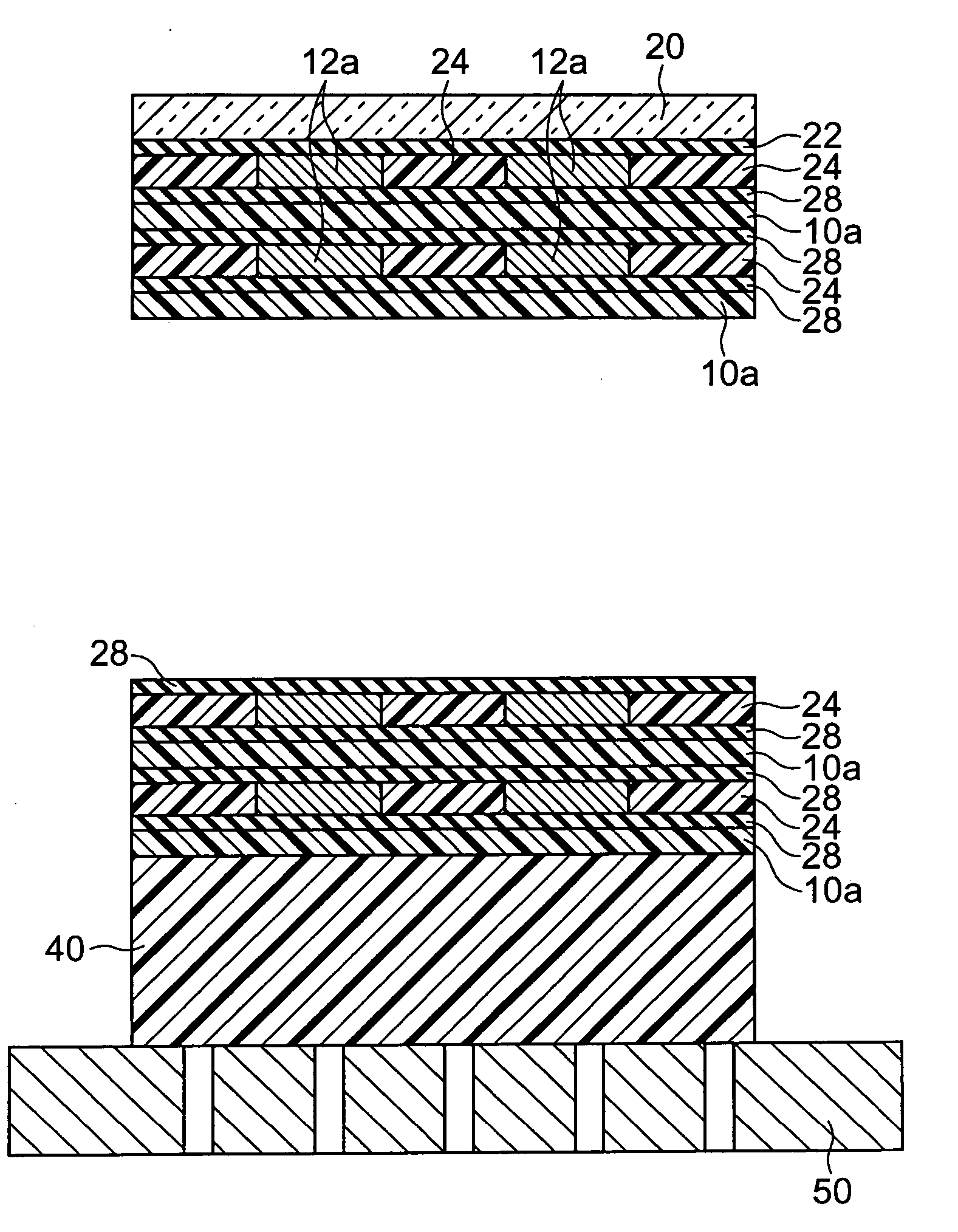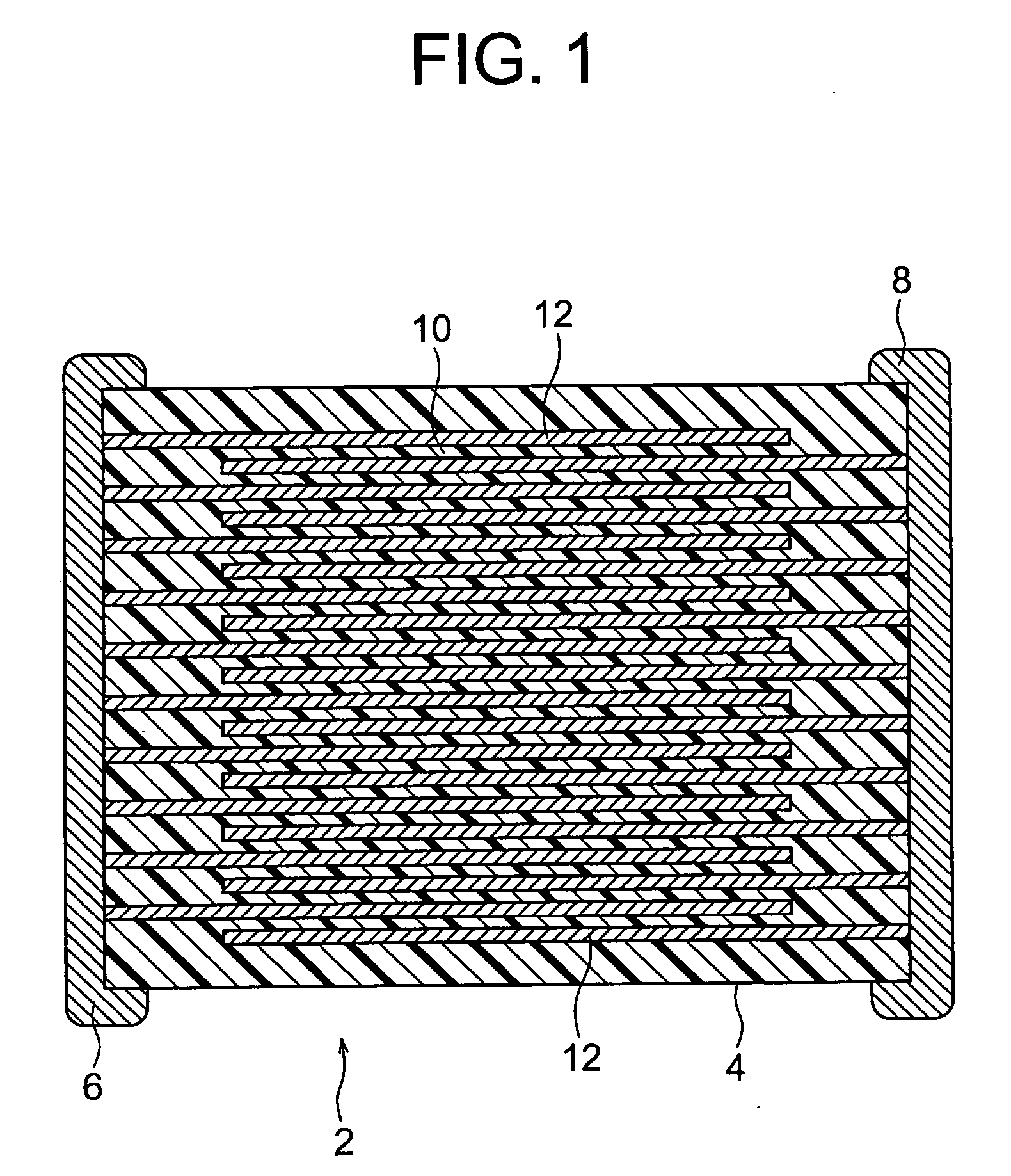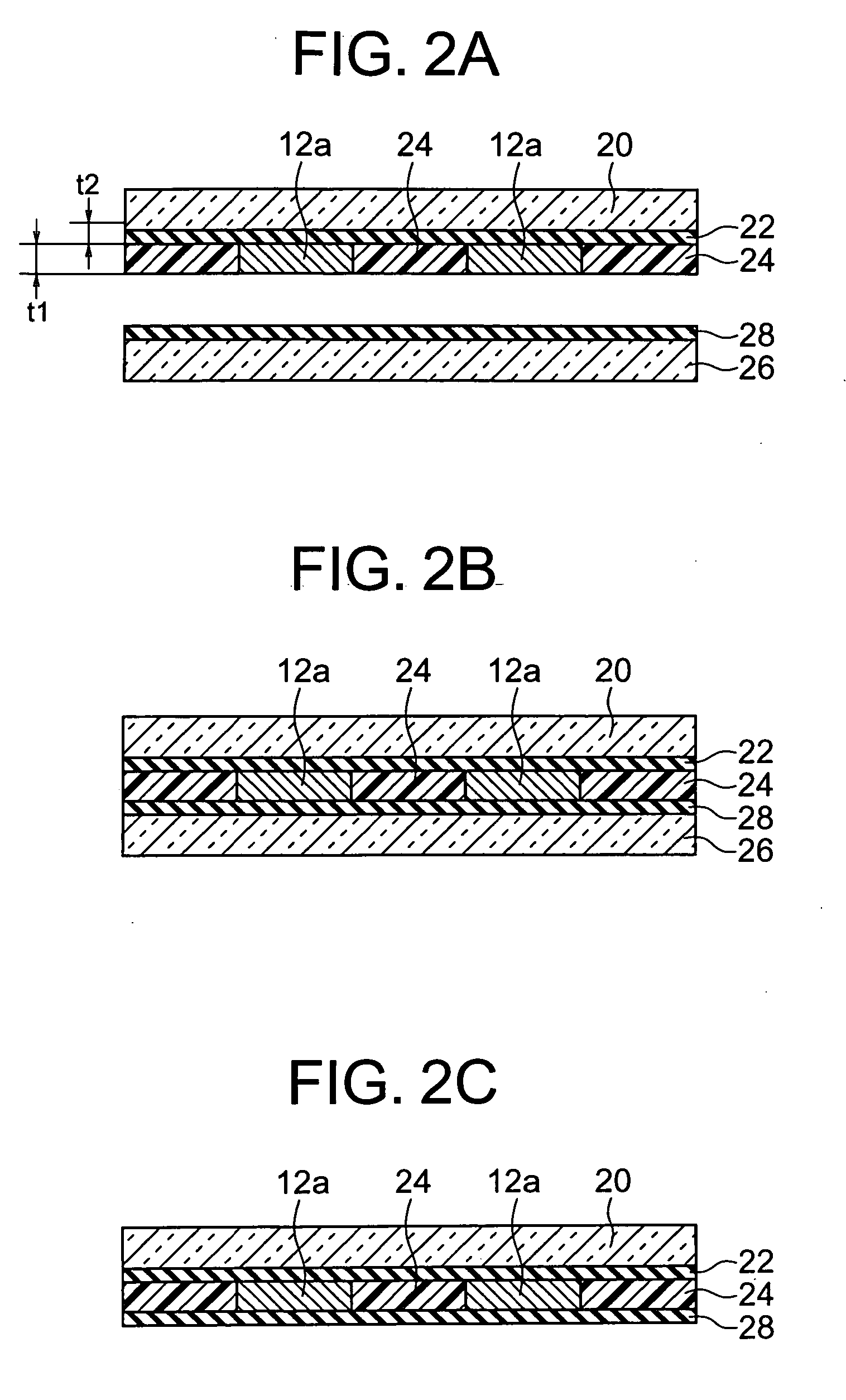Electrode step difference offsetting print paste and production method for electronic components
a production method and electronic component technology, applied in the direction of electrical equipment, domestic applications, inks, etc., can solve the problems of deformation of stacked bodies, delamination between sheets, etc., and extremely low viscosity of dielectric paste, so as to achieve excellent mechanical strength, effective delamination prevention, and excellent adhesiveness
- Summary
- Abstract
- Description
- Claims
- Application Information
AI Technical Summary
Benefits of technology
Problems solved by technology
Method used
Image
Examples
example 1
[0153] Production of Green Sheet Paste
[0154] As a starting material of ceramic powder, BaTiO3 powder (BT-02 made by Sakai Chemical Industry Co., Ltd.) was used. A ceramic powder subcomponent additives were prepared to satisfy (Ba0.6Ca0.4)SiO3: 1.48 parts by weight, Y2O3: 1.01 parts by weight, MgCO3: 0.72 wt %, Cr2O3: 0.13 wt % and V2O5: 0.045 wt % with respect to 100 parts by weight of the BaTiO3 powder.
[0155] First, only the subcomponents were mixed by a ball-mill to obtain slurry. Namely, the subcomponent additives (total amount 8.8 g) and a solvent (16 g), wherein ethanol / n-propanol is 1:1, were preliminary ground by a ball-mill for 20 hours. Next, the preliminary ground slurry of the subcomponent additives, ethanol: 38 g, n-propanol: 38 g, xylene: 28 g, mineral spirit: 14 g, DOP (dioctyl phthalate) as a plasticizer component: 6 g and a polyethylene glycol based nonionic dispersant (HLB=5 to 6) as a dispersant: 1.4 g were added to BaTiO3: 191.2 g and mixed by a ball-mill for 4 ...
reference example 1
[0190] Other than changing the weight percentage of the ceramic powder in the paste to less than 30 wt %, which is lower than the lower limit of the preferable range of the present invention, an electrode level difference absorbing print paste was produced in the same as in the example 1. As a result, due to a decline of the paste viscosity, a disadvantage that the paste flows out from a mesh of a print plate making was observed.
example 2
[0191] As shown in Table 2 below, other than using a polyvinyl butyral resin having a polymerization degree of 1700 as a binder resin, electrode level difference absorbing print pastes of sample numbers 10 to 17 were produced, and viscosity of the paste and the minimum possible print thickness by the printing method were examined.
[0192] The results are shown in Table 2. As shown in Table 2, pigment concentration of 38 to 50 wt % was preferable when the polymerization degree was 1700.
TABLE 2Polymer-ResinPigmentButyralationAcetalizationPlasticizerAntistaticViscosityPrintizationAmountConcentrationDegreeDegreeAmountAgent[Pa · s]ThicknessDegree[php][wt. %][mol. %][mol. %][phr]Kind(at 8[1 / s])[μm]Sample1017006306950Imidazoline Base10.7Sample111700↓34↓↓↓30.8Sample121700↓38↓↓↓51Sample131700↓42↓↓↓91.2Sample141700↓46↓↓↓171.6Sample151700↓50↓↓↓292.1Sample161700↓54↓↓↓45Sample171700↓58↓↓↓70
PUM
| Property | Measurement | Unit |
|---|---|---|
| viscosity | aaaaa | aaaaa |
| thickness | aaaaa | aaaaa |
| thickness | aaaaa | aaaaa |
Abstract
Description
Claims
Application Information
 Login to View More
Login to View More - R&D
- Intellectual Property
- Life Sciences
- Materials
- Tech Scout
- Unparalleled Data Quality
- Higher Quality Content
- 60% Fewer Hallucinations
Browse by: Latest US Patents, China's latest patents, Technical Efficacy Thesaurus, Application Domain, Technology Topic, Popular Technical Reports.
© 2025 PatSnap. All rights reserved.Legal|Privacy policy|Modern Slavery Act Transparency Statement|Sitemap|About US| Contact US: help@patsnap.com



